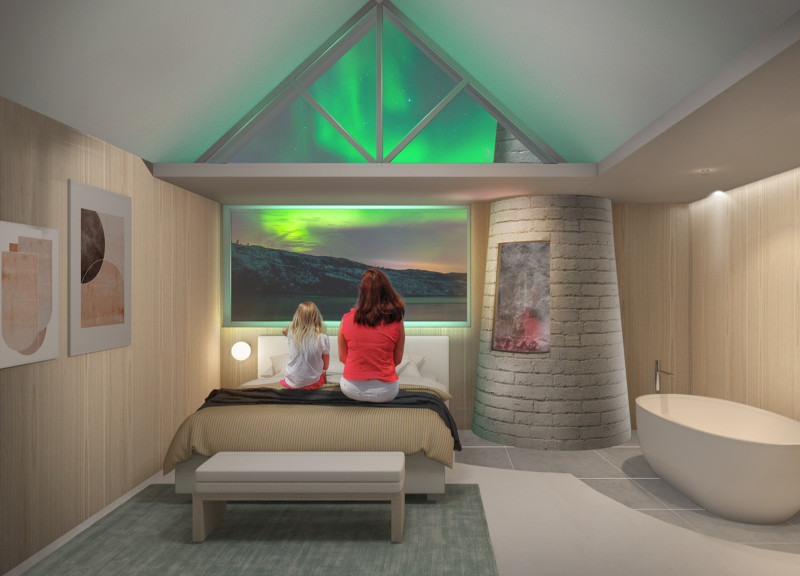5 key facts about this project
The design concept located in Iceland centers around creating a community-oriented living space that aligns closely with the region's cultural history and environmental conditions. The focus is on the traditional Turf House, a style that has evolved from Viking influences. This project integrates communal and private spaces, encouraging social interaction among residents and ensuring that the design is both functional and reflective of local heritage.
Community-Centric Design
The layout creates a village-like atmosphere where individual Turf House units are intentionally arranged to promote neighborly interaction. Roads weave through the community, making it easy for residents to move between homes and shared spaces. Key areas, such as a public kitchen and social gathering spots, are included to foster connections among those living there, enhancing the overall sense of community.
Material Utilization
The architecture relies on materials that are sustainable and fit for the Icelandic climate. Grass is the main component, used for both the walls and roofs of the Turf Houses. This choice not only provides essential insulation but also forms a direct connection to the surrounding landscape. Basalt stone adds structural stability, and mud acts as an efficient moisture barrier, helping maintain the homes’ integrity in damp conditions.
Environmental Responsiveness
The design carefully considers the challenges posed by Iceland's climate. Structures are crafted to resist strong winds and retain heat, making them practical for the environment. The roofs have a thoughtful design meant to deflect wind, while the herringbone pattern in the walls enhances both aesthetics and functionality. These elements ensure that the buildings remain resilient regardless of weather changes.
Integration of Traditional Elements
Fireplaces are strategically integrated within the Turf Houses, reinforcing the connection to Icelandic traditions. These features provide warmth and create a space for gathering, allowing inhabitants to enjoy the natural landscape outside. Each aspect of the design blends heritage with modern living, contributing to an overall experience that is both communal and rooted in the local environment.
























































